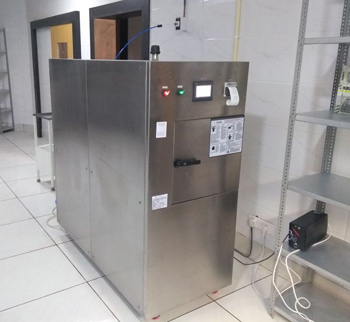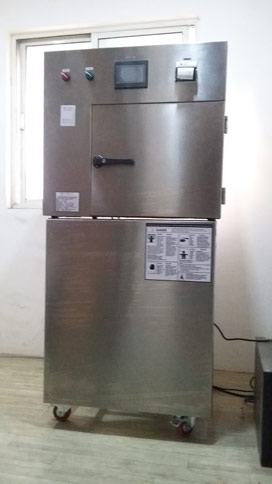Hospitals are always preoccupied with multiple patients engrossed with deadly diseases. Not only other patients but the visitors too are vulnerable to the infections. Therefore the air needs to be purified regularly with the help of purifiers and Sterilizer. The sterilizer is devices that reduce the number of active microorganisms either by killing or attenuation. By reducing the power of the microbes it is ensured that there will be lesser chances of exposing the people towards getting an infection.
ETO Sterilization
EO in EO Sterilisers stands out for Ethylene Oxide which is a gaseous compound known to possess sterilizing potential at a very low temperature. High temperature is a natural sterilizer as most microbes cannot withstand high temperature, hence they die, but at low temperatures, there is a need for an external sterilizing agent. Ethylene Oxide is a colorless and poisonous gas that attacks the cellular protein and nucleic acid of microorganisms. It is therefore commonly used to sterilize instruments with long tubes like endoscopes and all materials that cannot be sterilized by steam. EO sterilization machines are operated at a temperature of 25 – 55°C. A lower temperature will eventually lead to longer exposure time making the process less efficient.

Ethylene Oxide Sterilizer for Hospitals (Hospital Sterilizer)
Ethylene oxide gas Sterilizer is used in Hospitals so it is also called as hospital sterilizer and has been used for around 40 years to sterilize surgical equipment and supplies that can be heat sensitive or cannot tolerate excess moisture content.
Ethylene oxide Sterilizer comprises a sterilizing chamber that has an air inlet containing a bacteria obstructive filter, a steam inlet, gas conditioner, an Ethylene Oxide gas cylinder and a vacuum system to release the gas from the chamber through drain outlet.

ETO Sterilizer for Hospitals is fitted with the chambers that need to be heated up by electrical resistance or through the steam contained in a jacket surrounding this chamber. The sterilization cycle is a four-phase process namely conditioning, sterilizing, exhaust, and air purge. In the conditioning phase, a vacuum pump rejects air from the chamber and allows the controlled release of moisture or steam through the chamber heating system, raising the relative humidity. An EtO diluent mixture is inserted into the chamber after the process of humidification triggering the exposure phase. In the third phase, the exhaust phase, the vacuum system vents out the gas from the chamber to outside. Most Ethylene oxide gas Sterilizer revives the chamber with fresh and filtered air to prevent extra gas buildup from the items that are degassing inside the chamber. The sterilized contents are then aerated to remove any EtO residue inside the sterilizer chamber.
Automatic ETO Sterilizer in Hospitals is required to sterilize the surgical instruments, plastic and electrical tools that are used for various purposes. The surgical area is usually covered with equipment that cannot be steam-sterilized. Therefore the EO sterilizes medical devices to omit the chances of vulnerability. Hospitals prefer gas sterilization and therefore EO Sterilizer proves effective enough for complete safety.





